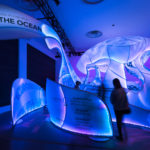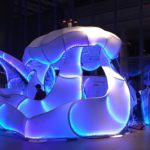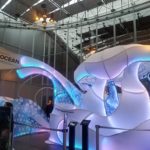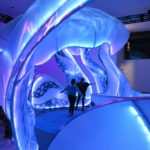Company:
Transformit Gorham, ME
Project Details
Fabric 1
Symmetry
Producer:
Supplier:
Fisher Textiles
Fabric 2
Spandex
Producer:
Supplier:
Associated Fabrics
Engineer Company 1
Transformit
Design Name
Matt Tarpley
Design Company
Thinc Design
Fabrication Company
Transformit
Subcontractor Company
Big Room Studios
Graphics Company
Grand Image
Project Manager Company
Vision3
Installation Company
Transformit
Please describe the project specifications
A walk-through, 16’ tall by 30’ wide, abstract Jellyfish designed and built to house the virtual-reality experience, "Drop in the Ocean." The Jellyfish’s body creates a dome-like VR theater and long tentacle-forms sweep around to guide participants through the installation.
What was the purpose of this project? What did the client request?
The Jellyfish is purpose-built to house "Drop in the Ocean," an immersive, interactive virtual reality experience. Produced by Vision3 and Conservation International, “Drop in the Ocean” is an interactive, social virtual-reality experience that immerses you deep in the water — and directly into the plastic pollution crisis plaguing the world’s oceans. The seven-minute-long experience is built from the photo archive of Academy Award-winning micro-photographer Peter Parks, narrated by explorers Philippe and Ashlan Cousteau, and features the ambient music of Gold Panda.
The Jellyfish was designed and built to fulfill practical, artistic, and technical requirements. It needed to create the physical environment for the "Drop in the Ocean" VR experience, with room for up to 30 people, including six participants as well as those in the queue and those in a transition space afterward. Artistically—through form, graphics, and lighting—the Jellyfish had to evoke the virtual deep-ocean experience within. And, the skeleture (sculpture+skeleton) of the Jellyfish needed to support cables and hardware, such as cameras and lighting, necessary to the interactive VR technology. On top of all this, as a traveling exhibit, the entire structure needed to assemble in such a manner that it could be readily disassembled, packed in shipping crates, and reassembled at its next installation. The lightweight aluminum tubing framework and tension-fabric skins with custom graphics enabled the designers and builders of this fantastical Jellyfish to deliver on all of these elements.
What is unique or complex about the project?
The technical requirements for this project were considerable yet the timeframe to design and build this complex Jellyfish was tight: the designers at Thinc Design started in February and brought us on board as fabric-structure fabricators in mid-March to draw, engineer, and fabricate the Jellyfish in time to be installed in late-April at the Tribeca Film Festival in New York. The demanding timeframe meant the design and fabrication team couldn’t deliberate too much nor prototype, so the whole process had to be efficient and somewhat experimental. Thinc had prior experience designing fabric structures but had never created a natural form like the Jellyfish, nor one that integrates the technology of virtual reality camera tracking systems into the structure. Our extensive experience creating fabric structures in natural and abstract forms, and with technical integration, made us the ideal partner/collaborator.
What were the results of the project?
The resulting fabrication, with custom graphics and internal lighting, brings Thinc’s design, with all its fluid-like curves and glowing colors, to life as a fantastical wonder of the sea that draws in a crowd. Of its premiere at the Tribeca Film Festival in New York City, Meniscus Magazine wrote, “The giant, glowing installment of a jellyfish that hosted the (“Drop in the Ocean” VR) experience became the centerpiece of the Virtual Arcade at the Tribeca Film Festival.”
Content is submitted by the participant. ATA is not responsible for the content descriptions of the IAA award winners.
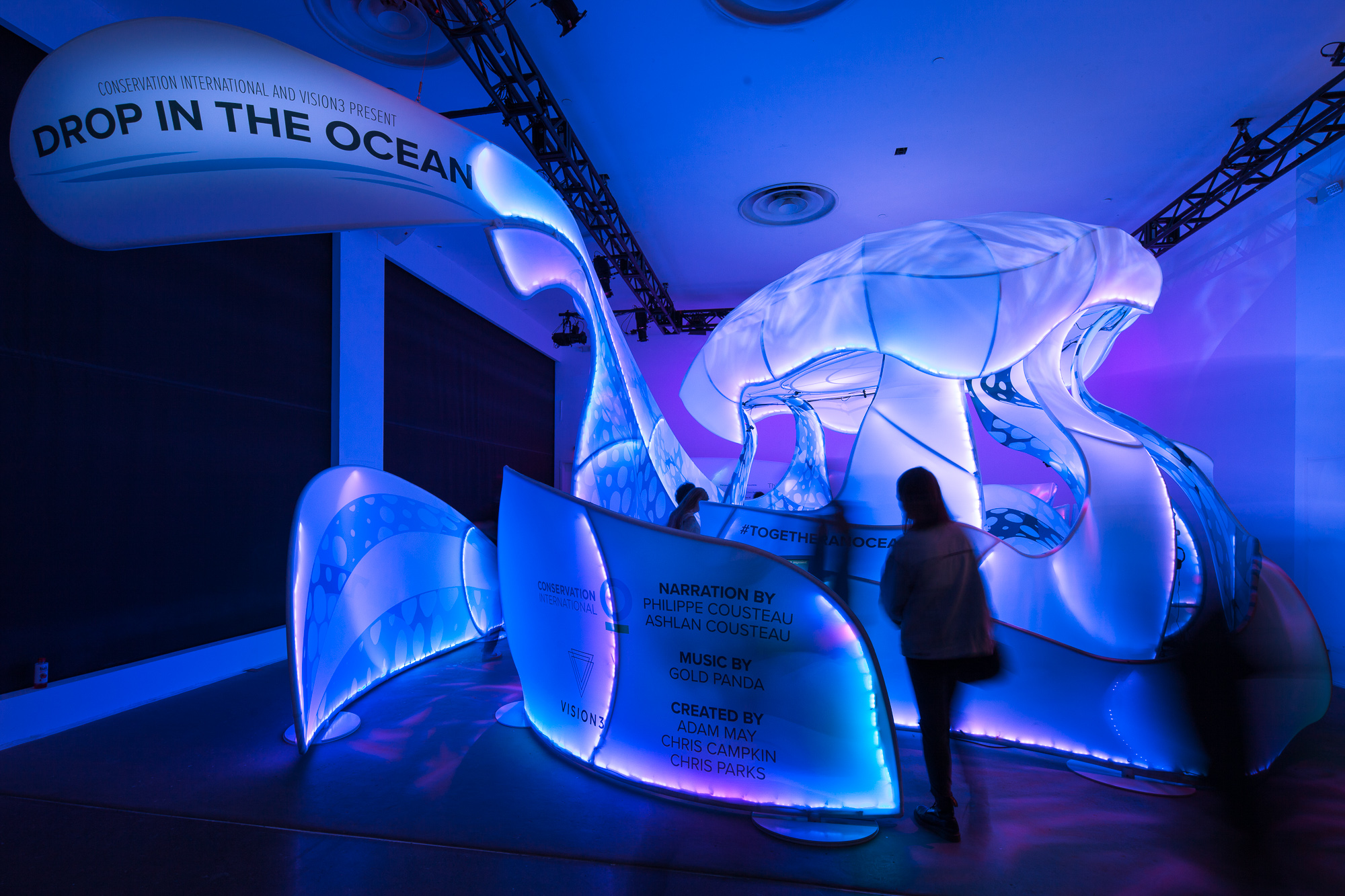
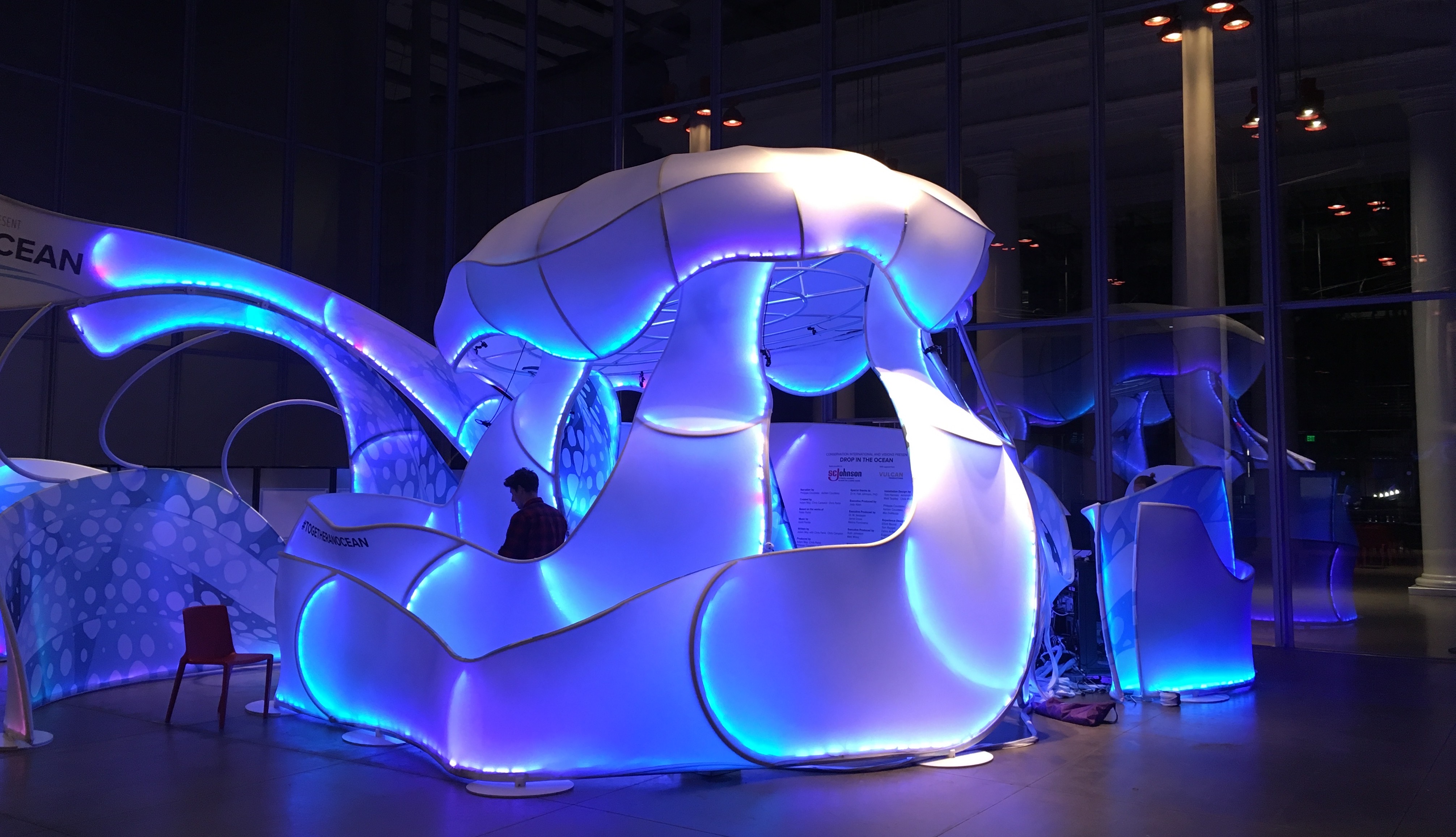

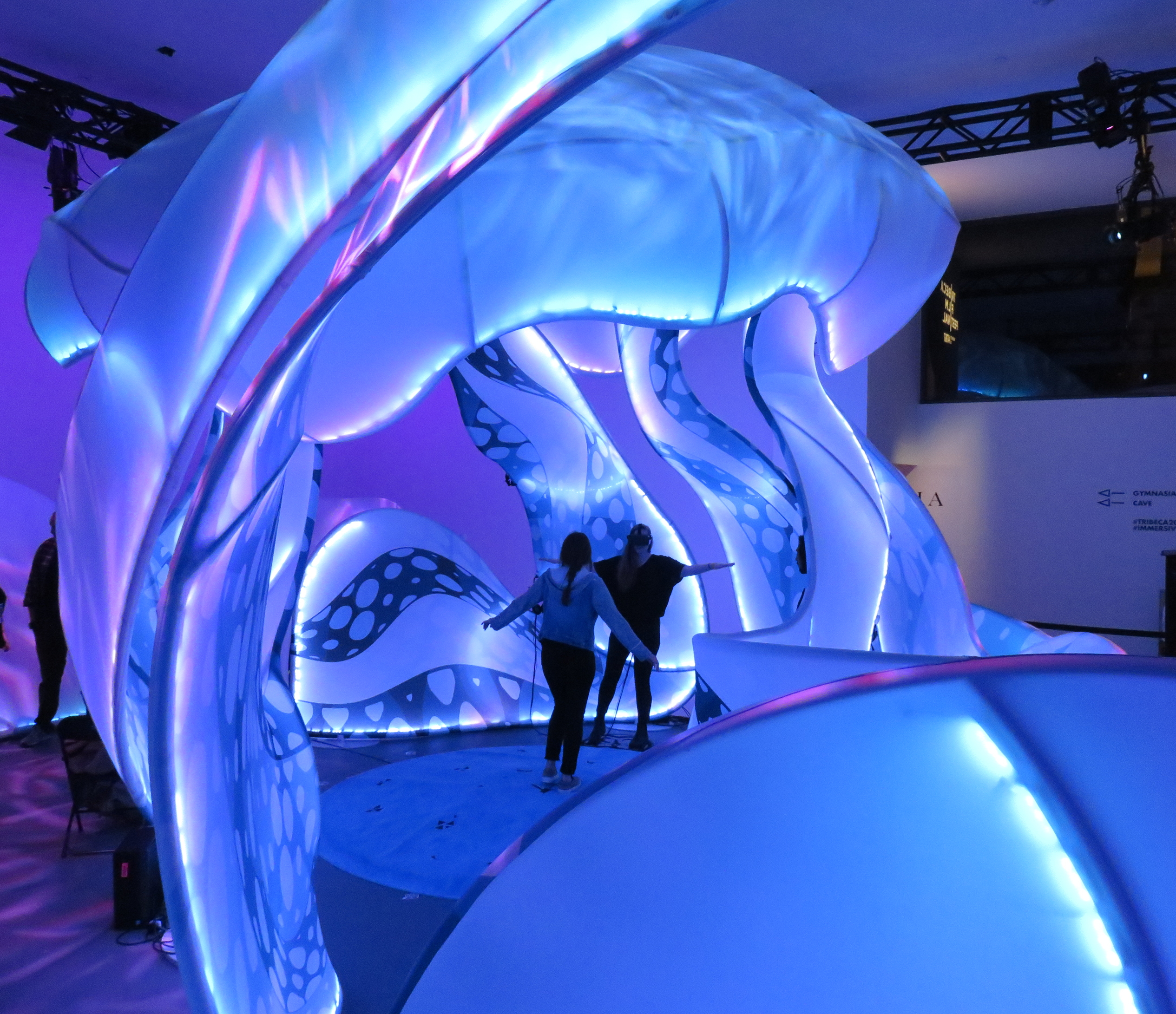
 TEXTILES.ORG
TEXTILES.ORG



